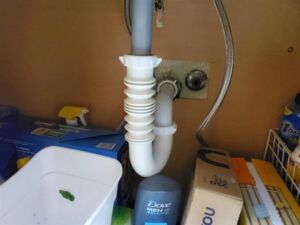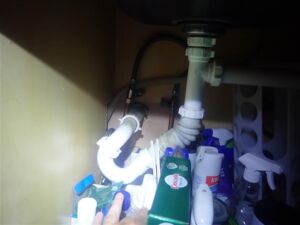
Most of the time the presence of flexible pipe indicates that the installation was not performed by a qualified plumber. One of the benefits of flexible pipe is that it is easy to install. The pipe may not even need to be cut to fit under a sink. It is also used when there is limited space under a sink and installing a proper smooth-walled pipe may be difficult. Although just because something is easy does not mean it should be done.
The main issue with flexible pipe is that it is more prone to clogs than smooth-walled pipe. Smooth-walled pipes are self-cleaning in that the swirling motion of the water as it drains cleans the interior of the pipe. The ridges within a flexible pipe trap dirt and debris and restrict water flow. Debris buildup makes a pipe more susceptible to leaks and causes poor sink drainage.

For a qualified plumber installing a proper p-trap using smooth-walled pipe should be common practice and can be done in most situations. The modern standards for drainage piping under sinks is to use smooth-walled PVC or ABS plastic. PVC and ABS can be cut easy using a miter saw or power saw. P-trap kits are sold at most hardware stores and usually need only minor adjustment for installation. These kits come with two plastic nuts, two washers, a section a straight pipe (which can be cut as needed), a p-trap, and a 90-degree section of pipe with integrated nuts.
Drainpipe leaks under sinks often go unnoticed and can eventually cause significant damage to the cabinet and even the subfloor. Sinks drains should be monitored regularly and repaired when leaks are present, or a sink is not draining properly. We recommend checking the drainage piping under your sinks for the presence of flexible drainage piping. If you discover flexible pipe in your home, you should have it replaced by a qualified plumber.
Check out the video below that shows an easy flexible pipe replacement:
